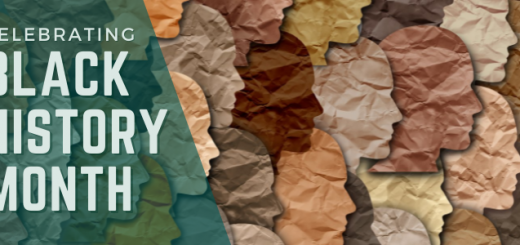Veterans are tangled in red tape trying to get their student loans cancelled as promised
Jodie Parks works full time as an occupational therapist at a Michigan state psychiatric hospital. But since October she’s had a second job: spending four hours a week, she estimates, making calls and chasing down paperwork to prove that she previously served in the military.
She needs that proof to have her student loans forgiven under the federal government’s Public Service Loan Forgiveness program, created by a 2007 law that pledged to erase students’ debt if they took lower-paying but critical jobs with nonprofits and the government.
It’s a promise that, for most borrowers, has yet to pay off. Fewer than 2 percent of applicants were approved between 2017, when the first borrowers became eligible, and the onset of Covid-19. And among the huge number of applications denied or lost in the bureaucracy were many from Americans who perform perhaps the ultimate public service: joining the armed forces.

“I’m another veteran who’s been told that there’s a service for veterans, and then when you try to get through the red tape, it’s too hard,” said Parks, who was in the Air Force from 2009 to 2015, stationed in Arizona, Europe and Africa, before leaving the military and getting a degree in occupational therapy. “So you just kind of give up.”
Ninety-two percent of military borrowers who applied for loan forgiveness before the pandemic were denied by the Department of Education, according to the U.S. Government Accountability Office, due to confusing and narrow rules about eligible loan types and repayment plans that made it difficult for them to qualify.
“The law made a promise to people that if they went into public service jobs, they would have their loans forgiven. And a lot of people went to school on that basis,” said Christopher Madaio, vice president for legal affairs at Veterans Education Success, which advocates for military members.
Related: Getting educated while on active duty is getting harder as military rolls back benefits
In October, the Biden administration temporarily loosened the program’s rules for one year to give more borrowers the chance to qualify. Waived are many of the strict guidelines that stymied applicants. Borrowers now can retroactively convert to a loan type that makes them eligible. That’s helped more members of the military with student debt: About 1,500 have had their loans forgiven under the waiver since October, a spokesperson for the U.S. Department of Education said in an email.
But that’s a tiny portion of the almost 177,000 active-duty service members whose federal loans are or could be eligible for forgiveness according to the GAO. And that larger number doesn’t include the thousands like Parks who are no longer on active duty. She and other veterans said they’ve spent months trapped in a bureaucratic maze that may actually make it harder for them than for nonmilitary borrowers to get forgiveness.
It’s not clear how many other people might be stuck. The Department of Education had about 173,000 forgiveness applications in process as of the end of February.
Thousands of dollars apiece are in play for those who joined the military. About half the active-duty service members who have federal student loans have balances of more than $13,000, according to the GAO.

A lot is at stake for the armed forces, too. In an all-volunteer system, they have a tough time finding people to fill mission-critical jobs, including doctors and information technology specialists, for whom the forgiveness program could be an effective recruitment tool, the GAO noted. In a survey of military lawyers, 94 percent said they’d be more likely to quit the service if the program were eliminated.
For Parks and other veterans, the biggest hurdle in getting loan forgiveness has been proving to the Department of Education that they served — an odd problem, since a fellow federal agency, the U.S. Department of Defense, has that information.
Parks, 39, has about $48,000 in student loans, and when she heard about the temporary waiver in October, she got to work assembling her forgiveness application. A key piece of it is a form that applicants must get signed by eligible current or former employers — government agencies or nonprofits — certifying the dates that forgiveness applicants worked there.
For Parks, getting that employment certification form signed by the state of Michigan, her current employer, couldn’t have been easier: “They were on it. They knew exactly what form it was,” she said.
She thought it would go the same with the Air Force. Instead, she spent weeks making calls to find out who in the bureaucracy might sign. Finally given the number of a person she was told could do it, she tried him every day for a month and never heard back.
Next, she tried the Veterans Administration, getting rerouted repeatedly until she reached an official who leveled with her: It would be nearly impossible to get a signature out of the VA because it didn’t have anyone designated to provide one. He suggested she go to a military base in person and ask someone there to sign the form, or contact a commander she knew. But most of her commanders had retired in the six years since she’d served.
All this would have been avoided had her loan servicer, a Department of Education contractor called FedLoan Servicing, accepted as proof a standard official document veterans get when they leave the military: their certificate of release or discharge from active duty, better known as DD Form 214. It shows veterans’ dates of service and is used as proof for benefits, including VA home loans.
But, Parks said, FedLoan told her it wasn’t enough — she’d need an actual signature on the employment certification form.
Since she couldn’t get one, FedLoan told her to pull together the documents she had, including Air Force W-2s from the time she’d served. She had only one, because her tax preparer throws away documents older than seven years. She finally submitted her application in February, four months after she started the process, but she doubts the single W-2 will be accepted as proof.

Other veterans and service members have experienced similar frustrations.
To qualify for Public Service Loan Forgiveness, a person has to not only work full time in a public agency or nonprofit, but also make the first 120 payments on their loans — which typically takes 10 years. Navy veteran Stacy Hunter, 46, submitted her DD 214 with her forgiveness application in October but was told in a letter from FedLoan and the Department of Education that her seven years of Navy service, during which her loan payments were deferred, didn’t count toward her 120 payments.
That’s despite the department’s announcement in October that months spent on active duty count toward PSLF even if the service member’s loan payments were in deferment. But neither the department nor FedLoan has explained why they’re not counting Hunter’s time, and she’s spent the months since trying to get answers. In February, she wrote her congressperson for help.
Mike Smiley, 42, also spent many hours getting military sign-off for, and seeking answers about, the loan forgiveness he believed he’d earned. He served 14 years in the Navy as a doctor, leaving in 2019. Today he’s a pediatric pulmonologist at Cardinal Glennon Children’s Hospital, a nonprofit in St. Louis. With $50,000 owed in student loans and four kids, he would be hugely helped by getting out from under that debt, he said.
Related: At some colleges that recruit veterans and their GI Bill money, none graduate
FedLoan wouldn’t accept his DD 214 and even rejected a letter from the Navy’s personnel command verifying his service, Smiley said. But former Navy co-workers connected him with the human resources department at his old command, and the department signed his employment form. He submitted his forgiveness application in early December.
After hearing nothing for several weeks, he became concerned that his paperwork had gotten lost, especially when a nonmilitary co-worker who’d applied for loan forgiveness two weeks after he did was approved. So Smiley submitted a complaint to the Department of Education and later went to the department’s ombudsman. He also started calling FedLoan every two to three weeks, spending at least an hour on hold over his lunch hour waiting to talk to someone. On one call in early March, he found out that his application was stuck because he’d saved it as a PDF file.

Finally, on March 22, the department’s ombudsman contacted him: His loan forgiveness was approved.
“I really wish they would come up with a process to take care of people, not just myself, but other people who are in my shoes who maybe aren’t as persistent,” he said.
For the Department of Education, part of the problem may be the avalanche of forgiveness applications. After the waiver announcement in October, the number spiked by 40 percent, said a Department of Education spokesperson. “The loan servicer system had not quite been reconfigured to be able to send the kind of automated communications that align with the terms of the waiver and the benefits that were being offered. … This is not a perfect process,” she said. (The latest department data show that, from October through early March, about 100,000 people total had qualified for loan forgiveness.)
If a forgiveness application is otherwise in order, the spokesperson said, the DD 214 “generally suffices” to prove military service. Asked in what cases it wouldn’t be enough, she said she didn’t know. “But it is a form of additional documentation that is acceptable,” she said.
Related: Veterans continue to battle for their military training to count as college credit
As for FedLoan, spokesperson Keith New said by email that DD 214 forms are acceptable if submitted with other information “supporting that the requirements for eligible employment have been met (e.g., full-time employment).” Such forms are “reviewed on a case-by-case basis,” he added. He said he couldn’t comment on Smiley’s and Hunter’s cases because of privacy laws.
For all that, Madaio of Veterans Education Success gives the Biden administration credit for using its authority to temporarily waive the program’s narrow rules, a step military borrower advocates had called for since at least November 2020. “The administration is trying as hard as it can,” Madaio said.
And the Department of Education said it’s making improvements. It’s working with the Department of Defense to set up a system that would automatically match data across the two agencies, said a department spokesperson — which could end borrowers’ hours on the phone seeking signatures. And it’s collaborating with advocates to draft new permanent regulations designed to help more borrowers qualify after the waiver expires in October.
Ninety-two percent of military borrowers who applied for public service student loan forgiveness before the pandemic were denied by the Department of Education
“We’re really hopeful,” said Kelly Hruska, government relations director at the National Military Family Association. “We’re glad that the Department of Education is doing this rulemaking and taking on these issues, and so we are anxious to see the final results.”
For her part, Parks feels lucky that her work schedule makes it possible to keep on top of her forgiveness application.
“If I wasn’t at a job with an afternoon shift, there’s no way that I would have gotten any of this done,” she said.
This story about military veterans and student loans was produced by The Hechinger Report, a nonprofit, independent news organization focused on inequality and innovation in education. Sign up for our higher education newsletter.


